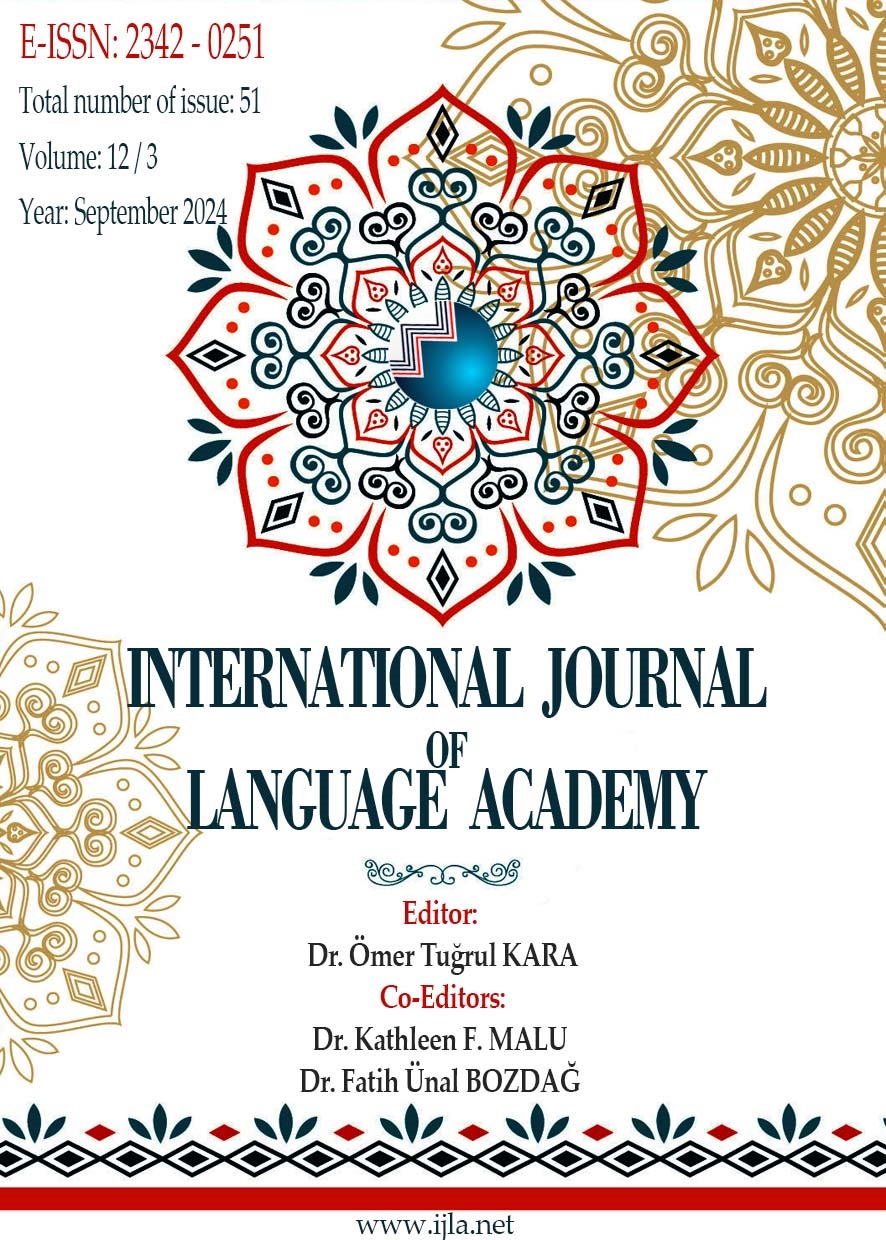Author :
Abstract
Bu çalışma günlük yaşama uygun biçimde uyarlanmış dizilerde geçen konuşmaların söz sırası alma sürecine ve bu süreçte ortaya çıkan sıralı çift görünümlerine dayanmaktadır. Sıralı çiftler, konuşma sırasında farklı konuşucular tarafından üretilen ikili dizilerdir. Kendine özgü kuralları bulunan bu çiftler, konuşma organizasyonunun bir düzen içinde ortaya çıkmasını sağlar. Konuşmada etkileşim, sıralı çiftlerin düzenli bir biçimde dönüşümlü olarak gerçekleşmesiyle oluşur. Konuşucuların sözcelerini tamamlayıp söz sırasını kendinden sonraki konuşucuya bırakmasıyla, konuşmanın özelliklerine uygun biçimde selamlama-selamlama, öneri-kabul, soru-yanıt, davet-kabul vb. sıralı çift örüntüleri ortaya çıkmaktadır. Bir dile özgü konuşma düzeninin, söz sırası alma etkinliğinin aşamalarının anlaşılması için sıralı çift dizilerinin incelenmesi önem taşımaktadır. Bu bağlamda çalışma, televizyon dizilerindeki katılımcıların karşılıklı konuşmaları sırasında ortaya çıkan sıralı çift örüntülerinin neler olduğunu göstermeyi amaçlamaktadır. Veri tabanını Gain platformunda yayınlanan 10 Bin Adım dizisinin ilk sezonunda yayınlanmış olan 10 bölümün tamamı oluşturmaktadır. Çalışmanın amacı doğrultusunda katılımcılar arasında geçen konuşmalardaki sıralı çiftler Schegloff’un (2007) belirlediği ölçütler çerçevesinde çözümlenmiştir. Videoların çevriyazıya dönüştürülmesinin ardından saptanan sıralı çift dizileri uzmanlar tarafından eş zamanlı olarak değerlendirilmiştir. Çalışmanın sonucunda Türkçede sıralı çiftlerin neler olduğuna ve kullanım sıklıklarına ulaşılmıştır. Türkçede en çok soru sormaya, en az ise izin istemeye dayalı sıralı çift örüntülerine başvurulduğu görülmüştür. Sıralı çift kullanımlarının katılımcıların konumuna, bağlama ve cinsiyetine göre değişiklik gösterdiği sonucuna ulaşılmıştır.
Keywords
Abstract
This study is based on the turn-taking process of conversations in series adapted for everyday life and the adjacency pair appearances that occur in this process. Adjacency pairs are binary sequences produced by different speakers during conversation. These pairs, which have their own rules, ensure that conversation organization occurs in an order. Talk-in-interaction is achieved through the regular alternation of adjacency pairs. When speakers complete their utterances and give their turn to the next speaker, adjacency pair patterns such as greeting-greeting, proposal-acceptance, question-answer, invitation-acceptance, etc., emerge in accordance with the characteristics of the conversation. It is important to analyze the adjacency pair sequences to understand the conversation patterns specific to a language and to understand the stages of the turn-taking activity. In this context, the study aims to show the adjacency pair patterns that emerge during the conversations of the participants in television series. The database consists of all 10 episodes of the first season of the series 10 Bin Adım broadcast on the Gain platform. For the purpose of the study, the adjacency pairs in the conversations between the participants were analyzed according to Schegloff's (2007) criteria. After the videos were transcribed, the adjacency pair sequences were evaluated simultaneously by experts. As a result of the study, the adjacency pairs in Turkish, and their frequency of use were found. It was observed that adjacency pair patterns based on asking questions were preferred the most, and asking for permission was used the least in Turkish. It was concluded that the use of adjacency pairs varied according to the position, context, and gender of the participants.





